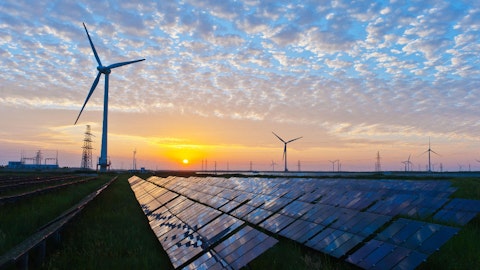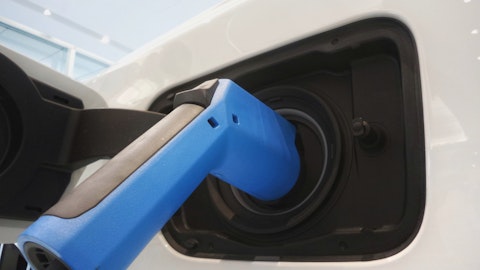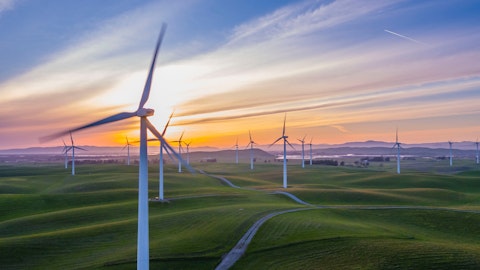Eric Stine: Hey, so on the generation portfolio, Toyota up and Derby, I believe, shortly, I mean, you’ll be at that 60 megawatts. As I think about the past, I mean, this goes back a ways, and I understand you’re taking on much more investment here to drive some of these very sizable opportunities. But in the past, you had talked about a 50 megawatt to 60 megawatt kind of breakeven level for generation where you would be EBITDA positive. And I’m just curious, is that something that you plan to update? I mean, could you give a little color there as it stands given your new cost structure?
Mike Bishop: Good morning, Eric. This is Mike. So I’ll take that. So yes, as these additional projects come online, we will have over 60 megawatts of projects online in the portfolio. So finishing up investments that have been made in the last several years, that will increase our generation revenue. As far as EBITDA for the portfolio itself, that’s a positive EBITDA portfolio. When you take out the depreciate — on our financial statements, we’re showing negative margins from the portfolio, but when you take out depreciation as well as the cost that we’ve expensed around the Toyota project for the quarter that came in around — I’m sorry, for the fiscal year that came in around 45% and for the quarter around 42%. So positive cash generation from the portfolio.
When we look at the overall business, as we said, we are making additional investments. We have increased our SG&A as well as R&D over the last several years to bring on these new technologies. As those come online and become revenue producers in the next few years, that will continue to improve the EBITDA profile of the company. We have not put out specific guidance around when the company gets to EBITDA positive, but we would expect to continue to drive in that direction as we get revenue from not only these new technologies, but continue to grow our activity on a global basis. Jason talked about the opportunity in Korea. We recently had a new service agreement come online that’s revenue producing, and we see further opportunities there as well.
Eric Stine: Okay, got it. That is helpful. And then maybe last one for me, just on the pipeline, do appreciate the breakdown both by application and by geography, but wondering, maybe I missed it, but did you give an actual amount or estimate of what that might be? I know that is something that you have done in the past.
Jason Few: Yeah, Eric, what we provided was really a look at the type of applications that we see in our pipeline. So if you look at that between power generation, electrolysis and hydrogen and carbon capture and what we refer to as carbon recovery. And then we gave a view of it by geography with those same applications. We did not provide a specific megawatt or gigawatt number to the pipeline. And I don’t think we’ve done that in the past, at least since I’ve been here. But what I would say is if you look at what we talked about on the call today, if you take, for example, the service agreement that Mike just talked about in Korea, there’s 100 megawatts of additional opportunity in the Korean market. We talked about three additional awards that are not fully negotiated yet.
So we’re starting to see that pipeline convert and the opportunities. We also see that some of the projects that we have in Europe, as they come up for renewal, we’re having some success there. So we think that we’re starting to get to a point to where we’re seeing that pipeline convert to opportunities and we’re excited about that.
Eric Stine: Okay, I’ll take the rest offline. Thanks.
Jason Few: Thank you.
Operator: Our next question comes from Jeff Osborne from TD Cowen. Your line is now open.
Jeff Osborne: Yeah, thank you. Just two quick ones on my side. I think you had mentioned you had advanced the planning for the solid oxide fuel cell facility potentially in the US. Can you just give us an update on how that advancement has gone, if there’s any update in terms of scope and/or CapEx? I think in the past you had talked about potentially upwards of $300 million. So I’d be interested in that. Then just following up on what you just said to Eric on the 100 megawatts in Korea, just hypothetically, if you were to receive an order tomorrow for that, when would the revenue flow through? Would you encourage the analysts to sort of model a proportion of that 100 megawatts for maybe the second half of next year or sort of zero out the product revenue for the year?




